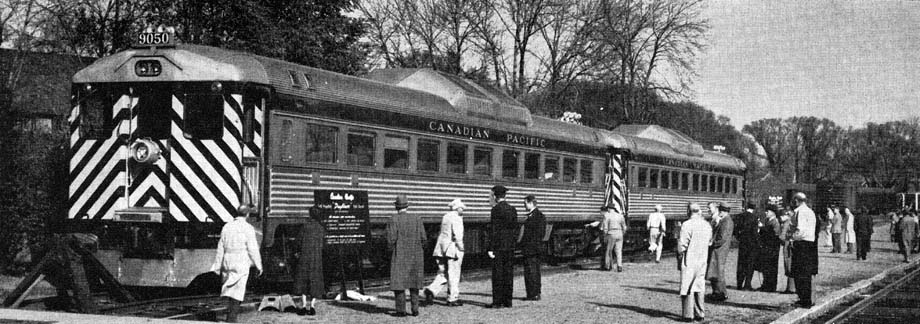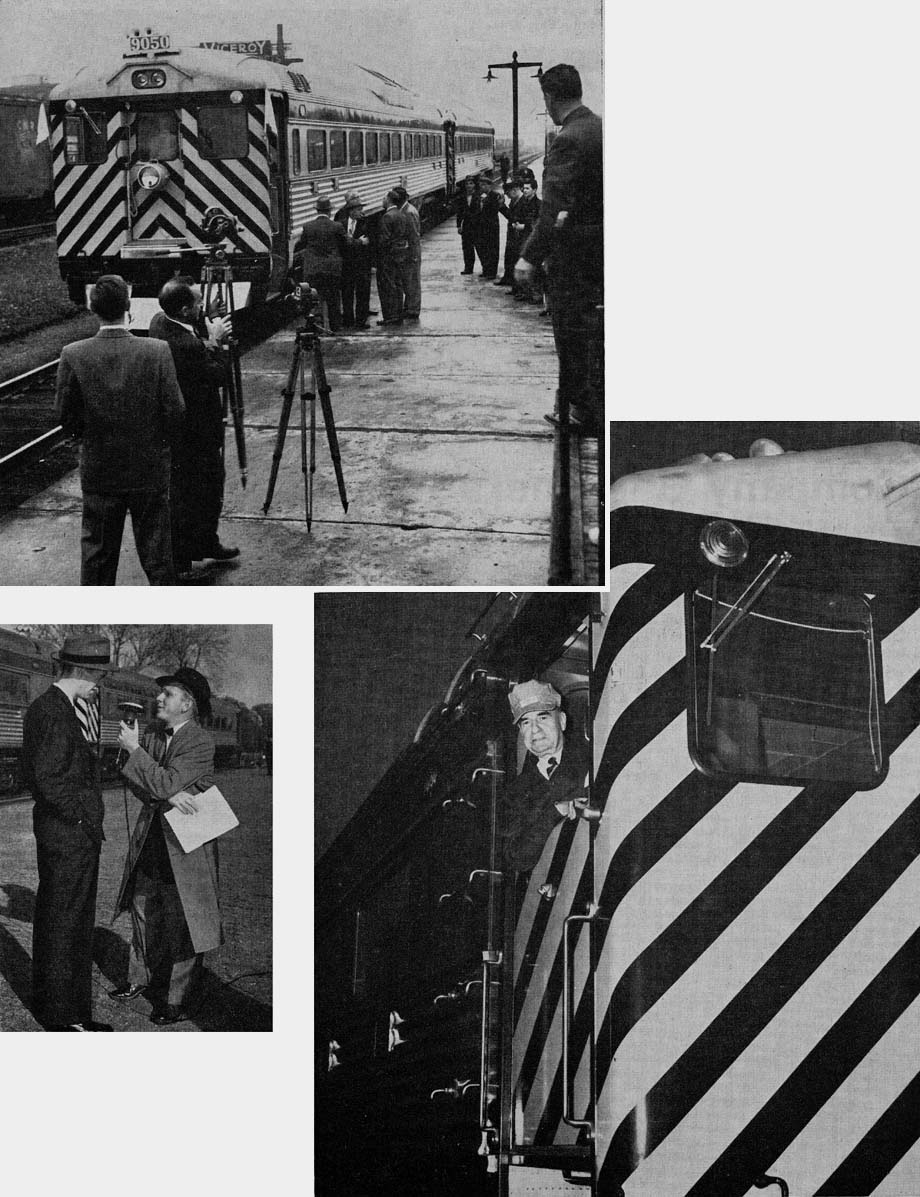

Dayliners Acclaimed by Press and Public
"The C.P.R. Dayliner is a real revolution," wrote Chatham Daily News columnist Victor
Lauriston, after he had completed one of the eight preview trips for members of press, radio, T.V., and newsreel
organizations which the railway staged at eight Ontario and Quebec points before putting its four shiny new
self-propelled Budd cars into service on three eastern Canadian lines, 9 Nov 1953.
The press trips, held at Toronto, Montreal, North Bay, Gait, Woodstock, London, Chatham, and Windsor, played a large part in attracting the approximate 34,000 persons who went through the new equipment to give it their personal inspection while it was on public display. The cars went on display immediately following press trips into each of these centres.
"The Dayliner," wrote Lauriston in his column, "is more than an improvement in railroad service. It is a revolution. The Dayliner represents the high point for the moment of the diesel revolution."
To members of the group who took the week-long ride from Toronto to Windsor, to put two of the new units on display at various points along this line, the trip more closely resembled that of a circus train.
As the Dayliner completed each display and left that city, it had aboard, in addition to some 25 Company employees, anywhere from 15 to 50 newsmen, there for the press trip into the next city. Into the rear car were loaded display signs, boards, arrows, stands, banners, lighting brackets, floodlights, and a working model of the disc brake in service on the units, plus personal baggage and equipment.
While demonstrations to the press went on in the lead car, Company personnel took 40 well-earned winks in the rear unit, But as soon as the Dayliner pulled into its next stop, the scene changed abruptly.
At Woodstock, Ontario, for example, more than 800 people were waiting on the platform as the Dayliner eased to a stop. Immediately after the newsmen had disembarked, the rear-car group went to work. Company police constables kept the crowd slightly back from the cars while explaining to them the more important features of the new equipment. Display men quickly set up sign boards and explanatory material. Electricians placed the floodlights and hooked up the brake model. Banners were jockeyed into position and battened down, while other men went through the cars sweeping and cleaning.
Less than 30 minutes later the first spectator started through the cars. An hour later Woodstock residents were still lined up in a long queue stretching down the station platform as more and more arrived.
Without exception this was the tale of the trips, almost as a circus playing a one-night stand in towns
across the country. By 8 Nov 1953 the public demonstrations were over. On Monday morning, 9 Nov 1953 the four
new cars started out in scheduled service, two between Toronto and London, and since 30 Nov 1953, Detroit and
Toronto, one from Montreal into the Laurentian Mountains to Mont Laurier, and the last from North Bay, east to
Mattawa and north to Angliers.

Top - Newsreel men go into action as the Dayliner stops at West Toronto during the first press trip from Toronto to Bolton. The press trip included 60 Toronto newspapermen, radio and T.V. commentators, and newsreel cameramen.
Left - Radio announcer Ken Ellis of London makes on-the-spot broadcast with Barry Scott, asst. public relations officer for the Company at Toronto.
Right - Louis L. Lang, of Kitchener, a Company director, shown in engine cab as the Dayliner arrives in Gait. The engineman's cap was presented to Mr. Lang as a memento of his Toronto-Gait trip.
 Railway Limited and is reprinted here with their permission. All photographs, logos, and
trademarks are the property of the Canadian Pacific Railway Company.
Railway Limited and is reprinted here with their permission. All photographs, logos, and
trademarks are the property of the Canadian Pacific Railway Company.
